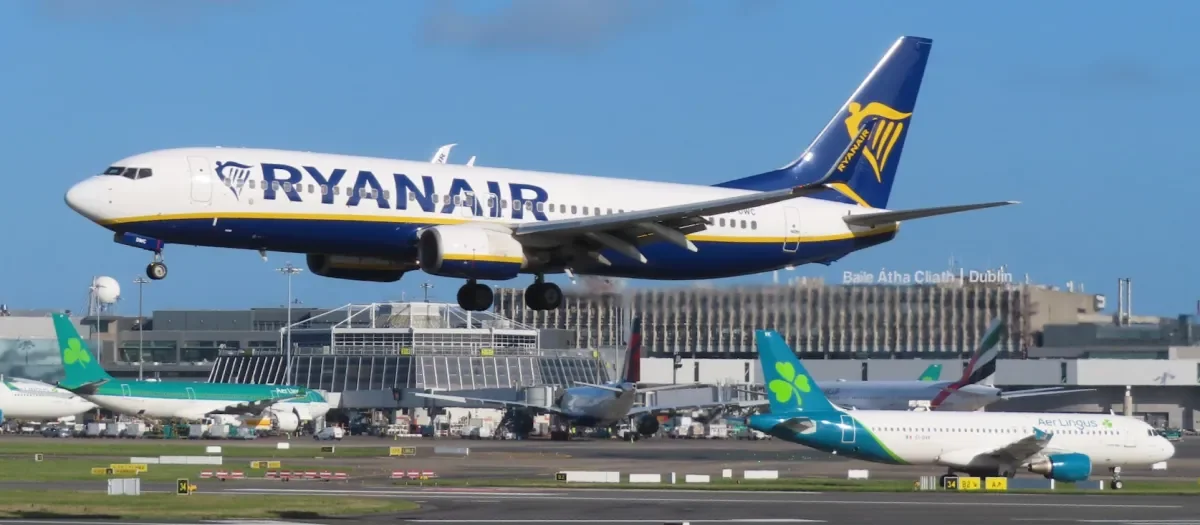
At the outset of the COVID-19 pandemic, the situation for business across a wide range of industries looked bleak, in particular the aviation industry. European passenger numbers dropped by 99%, while global GDP forecasts fell dramatically as the world experienced an intentional shutdown of economic activity, contributing to aviation’s greatest crisis since World War II. However, the quicker than expected roll-out of vaccines allowed short haul routes, and by association smaller regional airports , recover initially more quickly than their larger long-haul oriented counterparts.
However, how accurate was the planning carried out by the aviation sector during this period? Looking at the situation now, in 2025, were forecasts overly pessimistic? And what impact did such planning have?
During the initial pandemic ‘shutdown’ period, and beyond, there was an increased availability of normally scarce/expensive aviation industry information, delivered via multiple online industry forums and webinars. Hosted by, amongst others, Aviation Week, Airports Council International, Cirium, EUROCONTROL, and OAG Aviation, these broadcasts provided, in real time, an unprecedented level of access to expert insights on key trends and challenges from industry leaders, enabling a retrospective analysis based on extensive notes and observations captured in April 2020 and containing aviation stakeholder thoughts, concerns, and predictions prevalent during those initial weeks. These records provide an accurate snapshot of a critical moment in aviation history. In hindsight, this spontaneous and widespread exchange of knowledge, which was collected and analysed by researchers at DCU, stands as a record of the industry’s collective thinking under pressure.
The aviation sector faced an uncertain period of damage assessment, crisis management, and recovery planning in mid-2020. To preserve cash, airlines cut costs, reduced salaries, and offered passenger vouchers in lieu of refunds for cancelled flights. Many airports could not close entirely and faced massive revenue losses while transitioning to ‘right-size’ operations by closing terminals and runways, while maintaining cargo operations vital for transporting medical supplies.
Airports and airlines were seen as equally vulnerable given the collapse in air traffic, requiring urgent and substantial government intervention. Researchers and practitioners anticipated that structural fragility, especially among regional airports, could lead to considerable closures and consolidations, while airlines braced for substantial fleet retirements and a necessary strategic realignment. The strategic focus of these early industry discussions was clear across all key aviation sectors, being operational resilience, financial stability and government support.
Discovery of a vaccine to combat the virus was correctly identified by aviation stakeholders as a key prerequisite for a ‘return to the air’, with a likely period of at least 18 months before vaccine discovery and development suggested. This led to stakeholder identification of 'pre-vaccine' and ‘post-vaccine’ periods, with air travel significantly constrained until a vaccine could be rolled out. Predictions at that time accurately anticipated shorter recovery timelines for shorter routes than for long-haul travel and, reasonably accurately, a return to pre-pandemic air passenger levels between 2023 and 2024. The scale and speed of vaccine rollouts during the first half of 2021 and the subsequent relaxing, then removal, of air travel restrictions over the following twelve months exceeded early expectations, facilitating faster recovery in short haul travel markets, especially those with a tourism focus.
Many aviation stakeholders underestimated this rapid speed of recovery, however, particularly within short haul markets. For larger airports, this miscalculation caused significant operational and staffing challenges in key areas such as security screening and ground handling, given the previously reduced headcount, which was up to 20% in some instances. Long-haul international travel recovered more slowly, due in part to the extended closure of Asian markets to international travel. The expected reduction of business travel volumes due to enduring remote working practices was over-estimated by most stakeholders, with this sector recovering faster than initially expected.
Restoring confidence, in particular overcoming the then-prevalent fear of confined spaces, was a recurring topic concerning the air passenger experience. Speculation centred on mandatory health screening, mask use, social distancing, and capacity impacts, such as blocked middle seats and terminal capacity reductions. Many predictions were overly cautious and underestimated the impact of vaccinations and the rate of return to normal travel conditions globally. Early forecasts also overlooked human factors, including the impact of widespread job cuts on recovery activity, heightened stress among aviation workers, and long-term staffing challenges such as recruitment and retention that continue to affect operational resilience in aviation.
Predictions of broad government support for aviation proved correct. Airports and airlines benefited from ‘horizontal’ aid provided to all industry sectors, in addition to aviation-specific funding. Across Europe, the bulk of such support was provided to airlines whereas in Ireland, the majority of funding was directed towards airports.
What can we learn from these predictions and their implications? Initial caution around recovery timelines and consumer confidence was prudent, while underestimations of passenger recovery rates and market resilience suggest a need for more nuanced scenario planning. This might include contingency planning, ‘After Action’ reviews and/or war-gaming a number of possible future scenarios. Furthermore, by developing detailed ‘readiness for implementation’ plans to provide greater flexibility when needed, an organisation’s (over)reliance on a ‘most likely’ scenario planning model will be reduced.
Another clear lesson is the importance of stakeholder collaboration across the entire aviation ecosystem, which was deemed essential for survival and recovery. This cooperation enabled faster standard-setting, better health protocols, and a more unified ’return to the air’. While gaps remained, for example the alignment of cross-border health regulations and removal of restrictions, the pandemic experience highlighted the stakeholder interdependence at the heart of the aviation industry.
Understanding what predictions held true and what diverged can help to refine an organisation’s preparedness strategies, enhancing resilience in aviation. The reflections captured in 2020 and presented here serve not only as historical detail but as important and valuable lessons for navigating future industry disruptions, which are likely to be more frequent in nature.

Dr Noel Hiney is a specialist in aviation Stakeholder Management, as well as airport Business Performance and Resilience. He obtained his PhD from DCU in autumn 2024.








